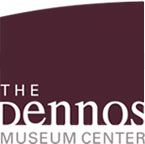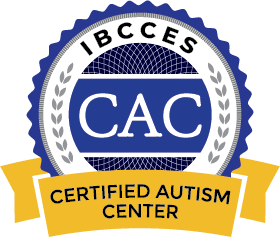
links for educators
learning about race
We hope these resources will be of service to our visitors, students, patrons, friends, and neighbors to help contextualize current events, and to learn more about racial inequality in America.
National Museum of African American History and Culture: Talking About Race
JSTOR: Institutionalized Racism: A Syllabus
Art Education
Arts Ed Connect
ArtsConnectEd is the product of a partnership between The Minneapolis Institute of Arts and the Walker Art Center. Using the power of the Internet to stimulate new approaches to learning, the goal of ArtsConnectEd is to make arts education timely, engaging, interactive, and pertinent for both teachers and students of all ages.
Getty Center for Education
The Getty education page with links to lesson plans. Created by the Getty Center for Education, this site provides several services to art educators. A few of these services include lesson plans, listings of projects and grants, contests for art students, and an e-mailing list for discussions.
The National Gallery of Art
A site where teachers and students can connect art and curriculum. Excellent Resource!
Inuit studies
Inuit Art Foundation
Wonderful background on Inuit culture as well as images, artist biographies, and some videos with artists.
The Government of Nunavut
Great resource for the study of Inuit art and culture.
Nunavut Handbook
Links to other sites about Nunavut.
Dorset Fine Arts
Dorset Fine Arts is the wholesale marketing division of the West Baffin Eskimo Co-operative. It was established in Toronto in 1978 to develop and serve the market for Inuit fine art produced by the artist-members of the Co-operative. Along with information about Cape Dorset artists, this site also has a history of Cape Dorset and information about Cape Dorset today.
Art-Making: The History of Printmaking In Holman
Great site on the history of printmaking in the Inuit community of Holman.
The National Gallery of Canada
This site includes information on the art collections, tours, and activities of the Canadian National Gallery, as well as information on its library and resources for teachers and students.
Additional Inuit Community Links
Links to Online Video
In the past we have loaned videos to educators to prepare students for tours at the Museum. The majority of these videos are now available online. It is highly recommended that you watch the videos before showing them to your students to ensure they are appropriate. Some videos do deal with mature subjects or include seals or other animals being butchered and used in other ways.
Here are some of our favorites:
- Cape Dorset, Nunavut: The Epicentre of Inuit Art, Indian and Northern Affairs Canada and the Hamlet of Cape Dorset, 2008
This short video provides an introduction to Cape Dorset’s contemporary art and what life is like in the arctic now.
Running Time: 5 minutes
URL: youtu.be/o54y4S-2NHc - Eskimo Artist: Kenojuak, National Film Board of Canada, 1963
This documentary shows how an Inuit artist’s drawings are transferred to stone, printed, and sold. Kenojuak Ashevak became the first woman involved with the printmaking co-operative in Cape Dorset and is one of the masters of Inui printmaking. This film was nominated for the 1963 Documentary Short Subject Oscar.
Running Time: 20 minutes
URL: www.nfb.ca/film/eskimo-artist-kenojuak - I Can Make Art…Like Andrew Qappik, National Film Board of Canada, 2005
This short documentary is a portrait of Andrew Qappik, a world-renowned Inuit printmaker from Pangnirtung, Nunavut. Originally inspired by images in the comic books he read as a child, Andrew now finds his subjects in the the stories, traditions, and day-to-day events of his world. In this film, Qappic captivates his students by creating a soapstone relief print before their very eyes. Then it’s the kid’s turn as they create a self-portrait relief print.
Running time: 11 minutes
URL: www.nfb.ca/film/i_can_make_art_like_andrew_qappik - Inuuvunga – I am Inuk, I am Alive, National Film Board of Canada, 2004
In this feature-length documentary, 8 Inuit teens with cameras offer a vibrant and contemporary view of life in Canada’s North. They also use their newly acquired film skills to confront a broad range of issues, from the widening communication gap between youth and their elders to the loss of their peers to suicide. In Inuktitut with English subtitles. This film deals with mature subject matter.
Running Time: 57 minutes
URL: www.nfb.ca/film/inuuvunga_i_am_inuk_i_am_alive - Kamik, National Film Board of Canada, 1989
This short documentary is a portrait of Ulayok Kaviok, one of the last generation of Inuit born and bred on the land. Ulayok and her family, like many Inuit today, strive to balance two very different world. Her skills in making the sealskin boots called kamik may soon be lost in the cultural transformation overtaking her community.
Running time: 14 minutes
URL: www.nfb.ca/film/kamik - The Living Stone, National Film Board of Canada, 1958
This documentary shows the inspiration behind Inuit sculpture and centers on an old legend about the carving of a sea spirit to bring food to a hungry camp. This film does include hunting scenes and the butchering of a seal.
Running time: 33 minutes
URL: www.nfb.ca/film/living-stone - Never Lose Sight, National Film Board of Canada, 2009
This short documentary presents the environmental challenges in Nunavut. Beneath the immaculate layer of snow, there are mountains of trash. Iqaluit’s two dumps are filled beyond capacity and the municipality has no plan to solve the problem. Throughout the film, we discover the problems faced by this isolated region and learn just how serious they are. But above all, we hear a call to action from the residents, who don’t want to see the North they love disappear.
Running Time: 21 minutes
URL: www.nfb.ca/film/never_lose_sight - The Northern Lights, National Film Board of Canada, 1992
Experience a visual panorama of animated legends and international space launches as indigenous people and scientists offer their perceptions of the wondrous northern lights.
Running time: 47 minutes
URL: www.nfb.ca/film/northern_lights - Owl and the Raven: An Eskimo Legend, National Film Board of Canada, 1973
Using life-like seal fur puppets, this animated short by Co Hoedeman tells the traditional Inuit tale of the owl and the raven.
Running time: 7 minutes,
URL: www.nfb.ca/film/owl_raven_eskimo_legend


